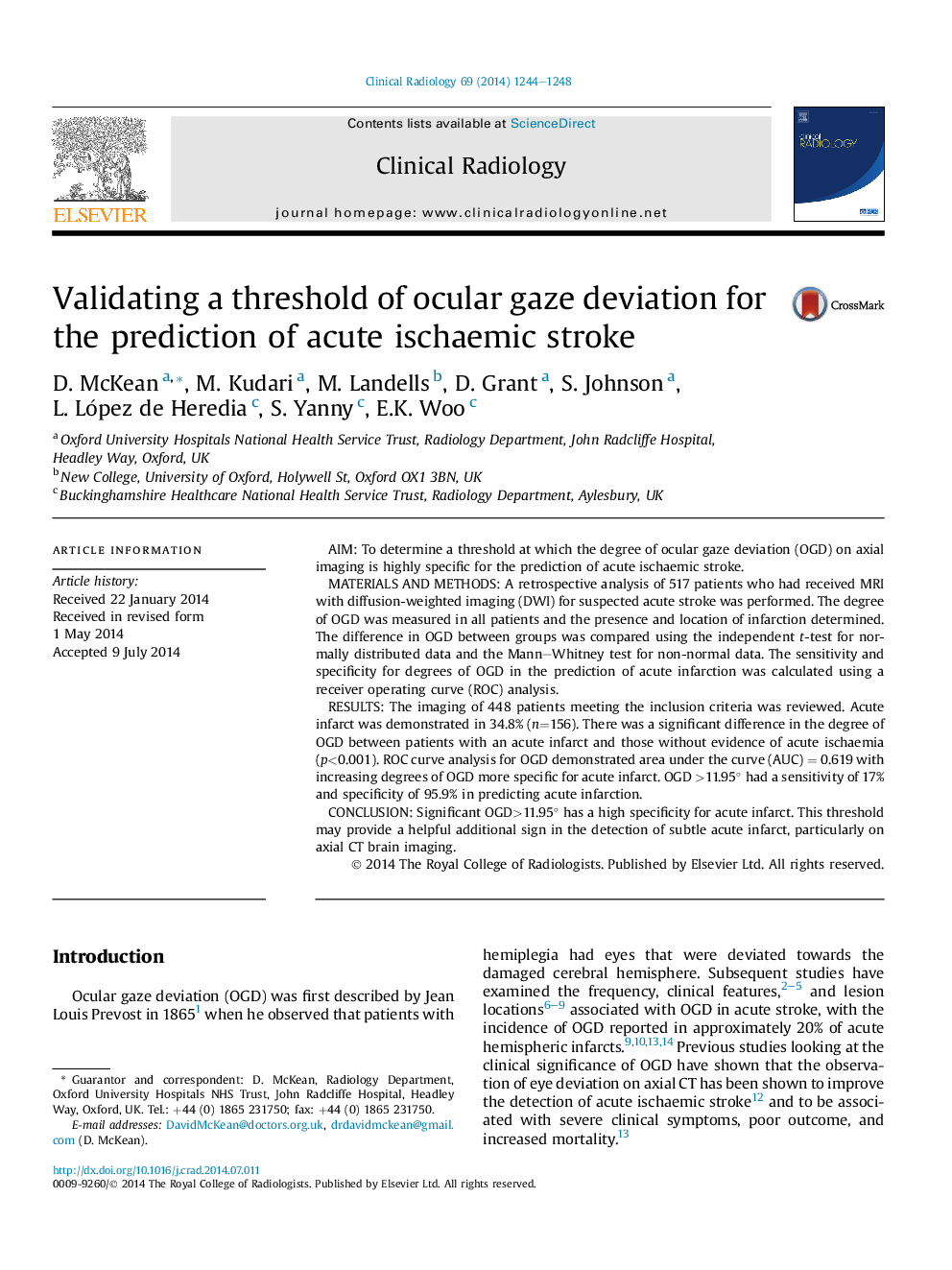| Article ID | Journal | Published Year | Pages | File Type |
|---|---|---|---|---|
| 3981650 | Clinical Radiology | 2014 | 5 Pages |
•Ocular gaze deviation (OGD) is a well known clinical sign of acute infarct•A simple measure of OGD on axial imaging is proposed for prediction of acute stroke•517 patients who received MRI for suspected acute stroke were analysed•95% specificity predicting infarct of OGD >11.95 is similar to hyperdense MCA sign•OGD may be simple and useful additional sign of acute infarct on unenhanced head CT
AimTo determine a threshold at which the degree of ocular gaze deviation (OGD) on axial imaging is highly specific for the prediction of acute ischaemic stroke.Materials and methodsA retrospective analysis of 517 patients who had received MRI with diffusion-weighted imaging (DWI) for suspected acute stroke was performed. The degree of OGD was measured in all patients and the presence and location of infarction determined. The difference in OGD between groups was compared using the independent t-test for normally distributed data and the Mann–Whitney test for non-normal data. The sensitivity and specificity for degrees of OGD in the prediction of acute infarction was calculated using a receiver operating curve (ROC) analysis.ResultsThe imaging of 448 patients meeting the inclusion criteria was reviewed. Acute infarct was demonstrated in 34.8% (n=156). There was a significant difference in the degree of OGD between patients with an acute infarct and those without evidence of acute ischaemia (p<0.001). ROC curve analysis for OGD demonstrated area under the curve (AUC) = 0.619 with increasing degrees of OGD more specific for acute infarct. OGD >11.95° had a sensitivity of 17% and specificity of 95.9% in predicting acute infarction.ConclusionSignificant OGD>11.95° has a high specificity for acute infarct. This threshold may provide a helpful additional sign in the detection of subtle acute infarct, particularly on axial CT brain imaging.
